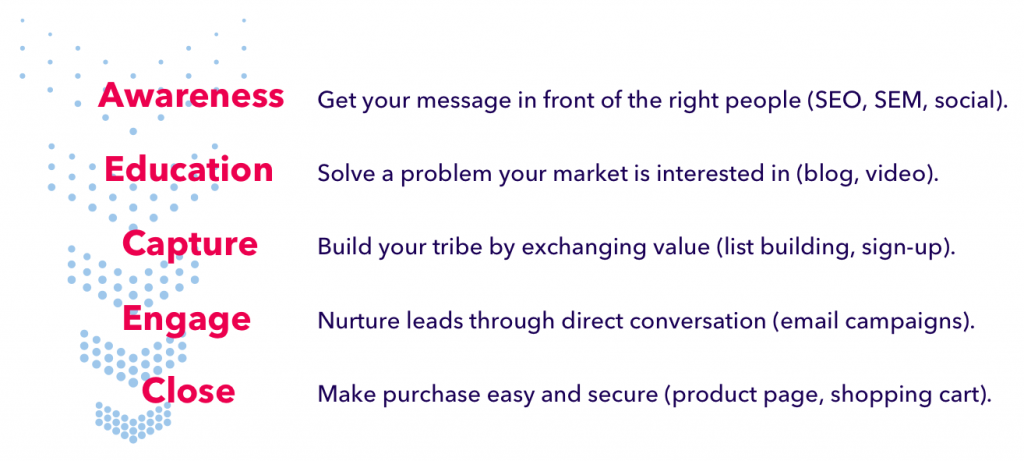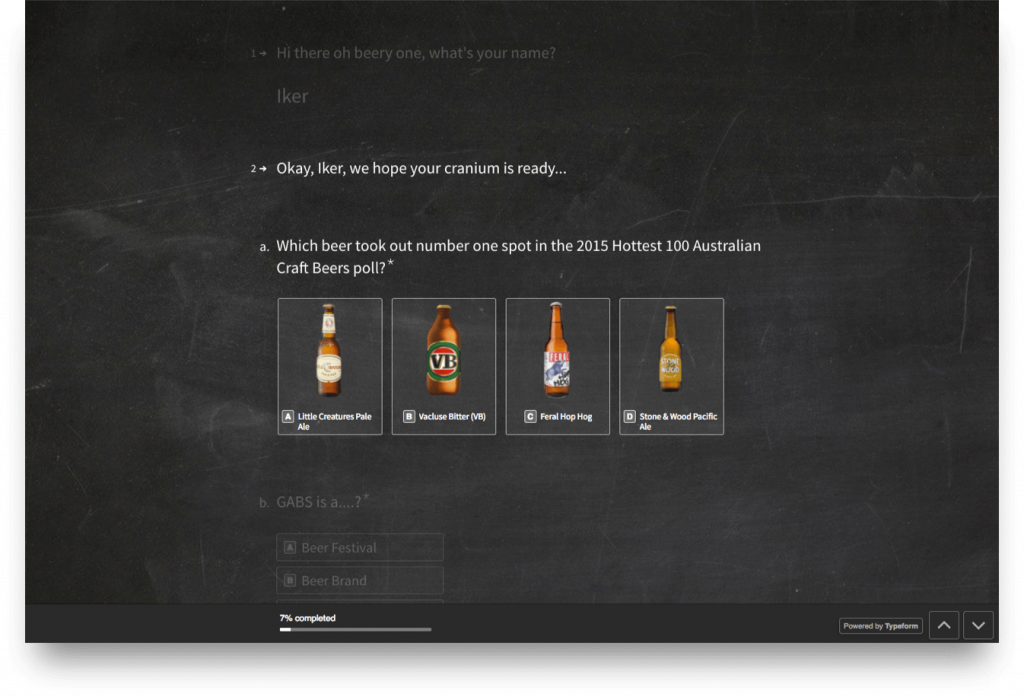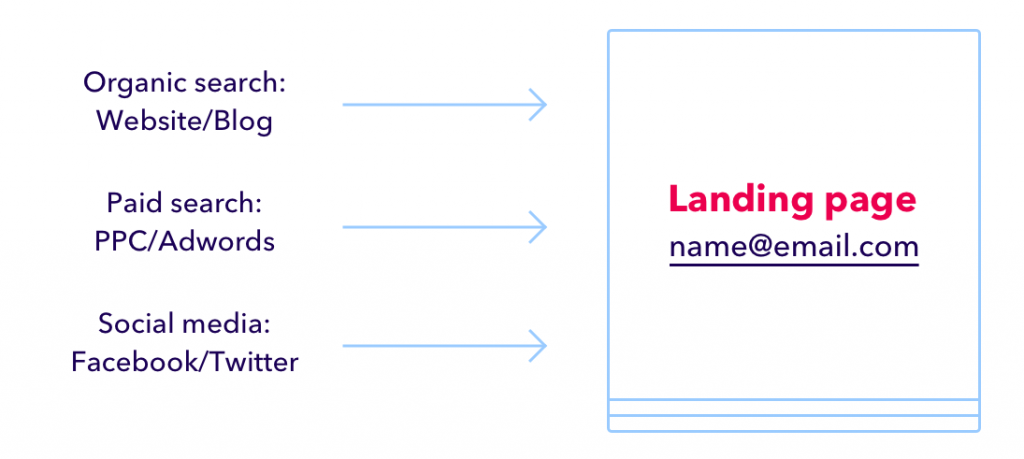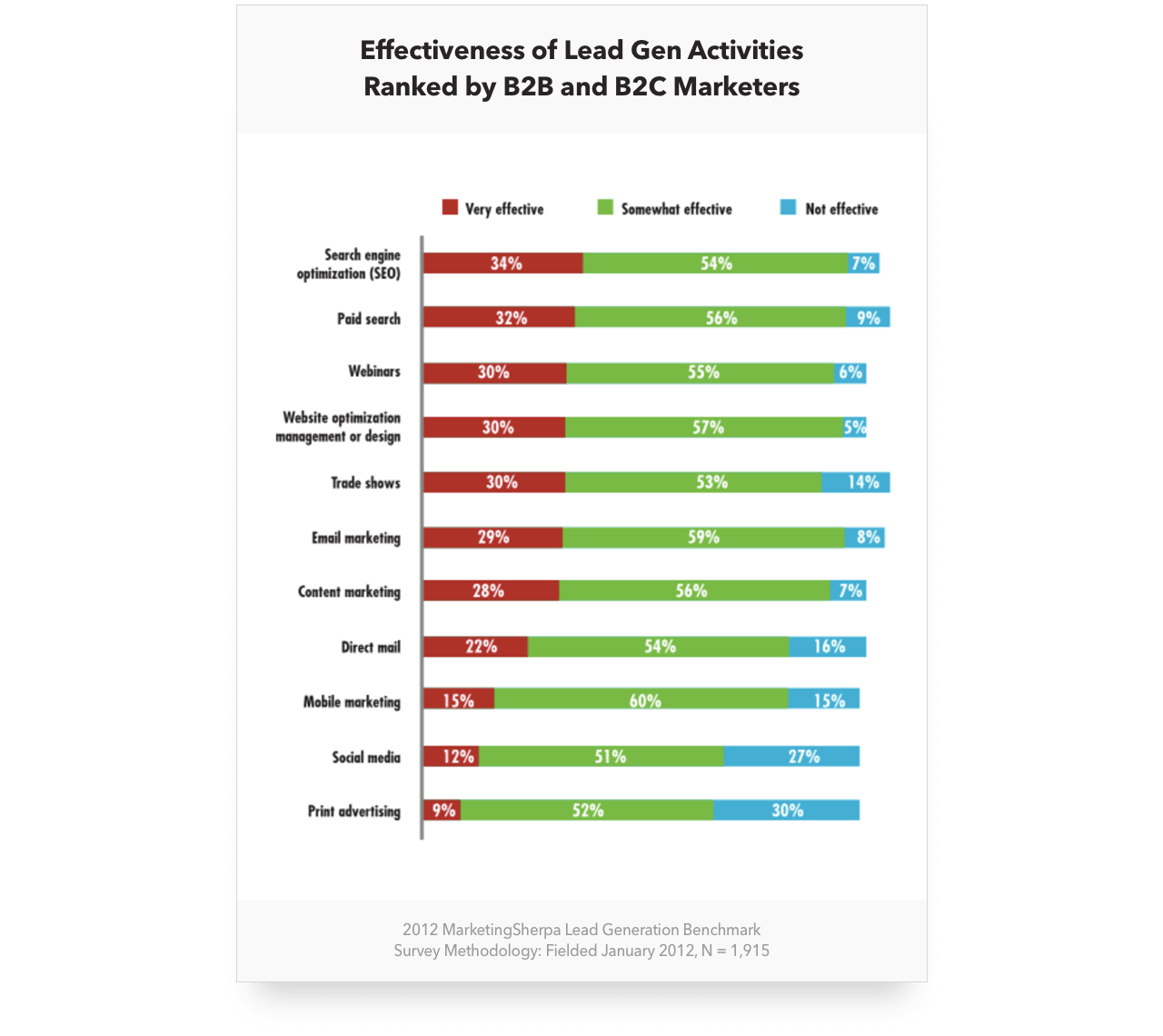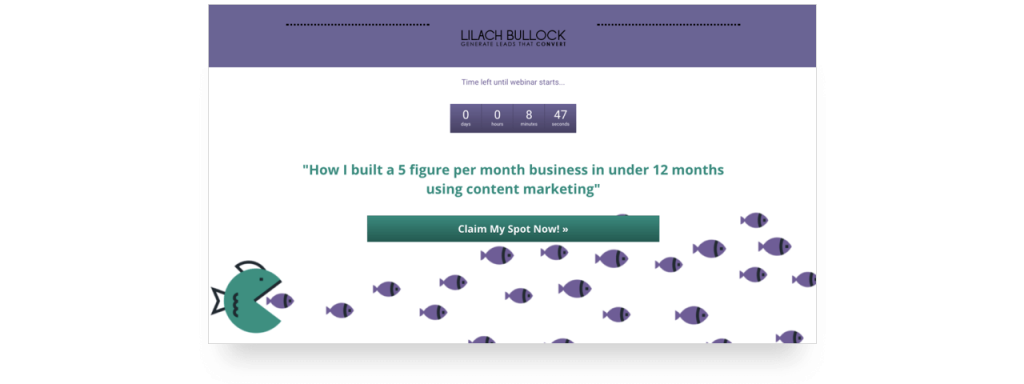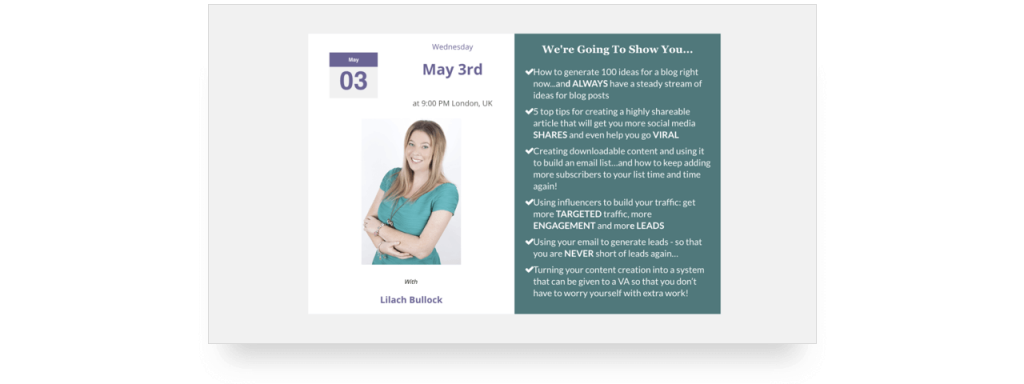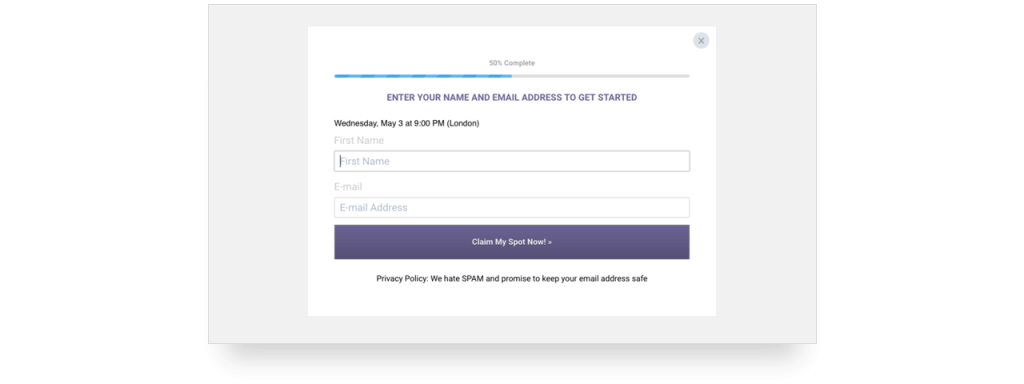Lead Generation: nearly everything you need to know
Exchange value, establish your audience, and hook them at hello - this is how you build a sales funnel that converts leads to customers.

To keep your business thriving, you need to continually attract and nurture relationships with potential customers.
The thing is though, not everyone’s a potential customer. So trying to drop as many people as possible into the top of your sales funnel isn’t the most effective way to build leads.
Here’s Alex Birkett, Growth Marketing Manager at HubSpot:
All your lead generation efforts should start from the bottom of the funnel: with the people who pay for your product. As current users they’re your target audience, your ideal customer, and people most important to your business.
Not sure who your ideal customer is?
- Run a persona survey or interview existing customers. This helps build a data-driven persona that you can use for all kinds of marketing decisions.
- Talk to your customer success team. They have the closest relationships with your customers, so they know who they are, what they want, and who sticks around. If they don’t know those things, do them a favor and pass them this guide to customer success.
Got someone in mind? Good. Never take your eye off that person—that long-term customer. They’re going to guide everything else you do. Including what’s coming up next.
Be memorable at every step of the journey
Once you know who you’re after, it’s time for them to get to know you. Because if you’ve got your eyes on someone—but they don’t know you exist—that’s called stalking. And nobody likes a stalker.
WordStream founder and Mobile Monkey CEO Larry Kim gives you another reason:
Great quote, but how do you do that? Brand awareness.
In the old days, this meant setting up booths at trade shows, blasting mass emails, and interrupting dinners with telemarketer calls. With a bit of luck, maybe you found a few people to pass onto your sales team.
But things have changed. Nearly 80% of us check our phones within 15 minutes of waking up. And we go on to spend over 10 hours a day looking at screens.
This always-on, information-everywhere world has given birth to a new type of person: the self-directed buyer.
Today, people research the brands and products that interest them long before they reach out to you. In fact, Forrester Research estimates that buyers are 70-90% of the way through their buying journey before you’ve even made an approach.
This has transformed lead generation into a full-funnel strategy. And at the heart of this strategy is content.
It’s part of the “inbound marketing” method, where you produce content to inform and entertain your target audience at every stage of their journey.
How does it work? Here’s Content Strategist Immanuel Simonsen:
That’s what lead generation is all about. Starting relationships with potential customers by giving them something valuable—for free. So when the time comes to pull out the pocketbook, they’ll already know who you are and what you can do for them.
But just creating content won’t cut it. Every interaction with them needs to make a difference, and every moment they spend with your brand should flow like a snowman in the microwave. To achieve that, you’ve got to get inside your target’s brain.
Why? Because information overload means it’s much harder to get people to notice you—even if you have something they need.
Nothing succeeds without attention. Movies don’t hit blockbuster status, relationships don’t thrive, and leads don’t get generated.
We’re all vying for space and time in the attention economy. Or as Reed Hastings, CEO of Netflix, put it: “[Netflix’s] biggest competitors are YouTube, Facebook, and sleep.”
And guess what: you’re competing with Netflix too. How the heck do you do that?
Design with the mapmakers in mind
Every time someone encounters your brand, cognitive systems are playing tug-of-war for their attention. Here’s what they’re going back and forth about:
- What automatically grabs my gaze and pulls me in?
- Is this relevant to me and my goals?
- How does it make me feel? Do I like what I see?
These questions drive the priority maps that keep a person locked on your message, or bouncing on to the next distraction.
Learning how your customers think is only half of the equation. The really important part is knowing what they value.
How many visitors arrive on your website, never to return again? Wouldn’t it be nice to know who those people are, and how many of them actually care about you?
To avoid being lost in the tunnel of Internet attention deficit disorder, you need a way to capture the interest of those browsing eyes. Maybe their name, company, job title—but at a minimum, their email address.
An email address gives you a direct, owned channel to send targeted messaging, coupons, updates, and offers. It’s like having a door straight into their attention stream.
Just how important is email? More than 80% of landing page traffic at Unbounce comes from email campaigns. And Noah Kagan, founder of SumoMe, says that email drives over 90% or the revenue at their seven-figure business.
There was a time when people passed out their email address like flyers at a political rally. Then people got tired of spam, bait-and-switch offers, and plain old shitty content.
So to get those emails, you’re going to need to do some relationship marketing. Here’s how.
Offer them value, for free
It goes by lots of names: lead magnet, bride, incentive, bait. Instead, think of it as an exchange of value with your ideal customer. You offer them something they want, they give you their email address.
Here’s EmailAnalytics Founder Jayson DeMers:
What should you offer? Here are your main options:
- Content. Free info that’s worth paying for—to inform or entertain.
- Discounts or coupons. An incentive to purchase a product or try out a service.
- Giveaways or contests. Free stuff, tickets to events, cash drawings.
So if you’re a SaaS company looking for new users, this could be a discount or a free trial.
Are you trying to build a subscriber list for your blog? Offer a highly-researched ebook or in-depth results to that state-of-the-industry survey you ran.
An online flower shop might offer a 20% discount before Mother’s Day as a helpful reminder. Or hook people higher up the funnel with a guide on growing a mood-boosting Zen garden in your bathtub.
Whatever you offer, it should satisfy some need or solve a problem—wherever they are in their customer journey. So make sure you build offers to target people at all stages of the funnel.
Need more ideas?
Look beyond the narrow customer journey
Do a billion people really love WhatsApp and Facebook? No. They love how these apps let them connect with others. Your product is the same– it' s part of a larger journey and fulfills a specific need.
An online flower shop might offer a contest for couples to win the ultimate date night. Because flowers are also a tool to help keep the romance going, see how it all fits together?
Here are a few more ideas and tools to get you started:
- Viral quiz
- Big-rock content: ebook, guide, white paper, research report
- Email course
- Giveaway: gift cards, free trip, autographed Madonna chastity belt
- Contact form
- Cheat sheet: common metrics, glossary, checklists, etc.
- Email templates
- Free product demo or consultation
- Coupons or product discounts
- Pre-consultation screening
- Interactive mini-apps
Deliver what you promise
One strategy is this: throw a pop-up in the middle of the screen promising some mind-blowing, life-transforming insights. And then send them a mediocre spin-off of some listicle advice you found on Buzzfeed.
A better option: provide content that’s actually mind-blowing. Or at least pretty darn useful or entertaining. If you do, people will share it, and Google will reward it with SEO coins.
And most of all: you build trust with your audience.
This way, when you send that follow-up email, your new lead will be more likely to click on your next offer.
Now you’re making connections with the right people.
You’ve all seen the expression embroidered on your grandma’s hand towels: “The form is where the heart is.”
Of course not. Grandma hates forms. But they’re the heart and soul of your high-converting lead gen campaign (or they should be).
So make sure you' re leaving the right impression.
Say hello with your landing page form
Think of it this way: if you can create an online form, you can collect leads. Pop-ups, contact forms, subscribe bars, order forms, even conversational bots—all ways to ask for personal info from potential buyers.
Need an example? The Beer Company used a typeform to create a fun and informative quiz. After answering some engaging questions, users can add their email to get their score and see the correct answers. It’s easily shared through social media or embedded in a webpage.
Try their quiz to test your beer knowledge
Landing pages: stick to the expert formula
Another place to generate leads is through a dedicated landing page on your website. We’ve done the hard work of uncovering what exactly makes a good landing page.
Incorporate the following tips below and do as the experts do.
1. Hook them at hello
How do you make sure you’re writing copy that will appeal to your audience? Sujan Patel, Cofounder of Web Profits, has the key:
Really?! Sujan gives two examples—When I Work and Mailshake—that have done just that. Better results by using headlines taken straight from customers’ mouths.
2. Say just enough, and say it perfectly
Lilach Bullock, social media and digital marketing expert, reminds us of these important writing tips :
- Use action-oriented verbs—like “drive,” “discover,” “generate”—to make people feel something. They give a sense of urgency and move people to take action.
- Focus on the benefits of using your product or service, don’t just list features. How does it make people’s lives better? How can it improve their productivity? What difference will it make in their day to day?
Customer first, solution second.
3. Grab attention with images, videos, and GIFs
This isn’t just to make things pretty. You’ve heard that images are processed 60,000 times faster than text. But did you know they’re also useful for guiding attention?
Just ask this adorable baby. No, that’s not a radioactive virus engulfing his face. That’s a heatmap of where people looked on the landing page.
In the top pic, see how the baby stole attention from the text? Good for the baby’s future modeling career, not so good for the marketer’s message.
But in the bottom image, people followed the baby’s gaze straight to the text. Way more effective.
Use images, but use them wisely. And as HubSpot reminds: put your copy before design. Because what good is grabbing attention if you don’t have anything to say.
4. Build trust through social proof
Here’s a trick: point out to your target audience the value you’ve given to similar types of people. Content Strategist Brittany Berger tells you how:
5. The more you qualify, the less they click
Here’s the basic rule: to improve clickthrough rate, ask fewer questions in your form. But asking more questions results in more qualified leads—the people who are really interested.
So define your goals, and find your balance.
6. Don’t neglect the final check
When you’re all done, check your spelling and grammar. Simple readability and spelling errors can actually cost you money.
If you can’t be trusted to check and double check your published work, you know, your best foot forward, how can you expect potential customers to trust you?
Before you can enchant your audience, you need to make sure they land on your page in the first place. How do you do that?
When a great campaign comes out and nobody sees it, the only people who notice are the rest of your marketing department, and your unimpressed CFO.
So how do companies like HubSpot and Marketo continually bring in thousands of leads per month? It starts with the basics: good brand, good product. And a lot of well-designed lead gen campaigns.
This means sharp offers targeting relevant audiences, with links to landing pages scattered all along a potential customer’s journey.
Promote where your audience roams
Remember the “content shock” we talked about? Consumers are slammed with emails, ads, articles, and offers. So how do you get your lead gen campaign in front of the right eyes?
Not by slapping people in the face with pop-ups and push notifications. The trick is to be there when your audience is looking for you.
Google calls these “micromoments”—those critical touchpoints when people are open to influence. These are “if-only-I-had” moments, and “how-could-I-do-this-better” moments. It’s when the Executive takes control of priority maps, and attention goes searching for solutions.
Where does your audience search? That’s what you need to ask yourself. And that’s where you need a link to your lead gen landing pages.
Here are the basic channels where your campaign links should live:
Your Website
The other day, I was searching for a rental car in Dublin. I clicked on one of the first few links that Google offered. After selecting the dates I needed the car, I got a pop-up coupon for 10% off my rental. All I had to do was add my name and email address. An offer for an email.
Popups, sign-up forms, subscribe bars, contact forms—all ways to capture leads online. Optimize your website to convert visitors into leads. And optimize for search engines (SEO) to make sure Google recommends you.
Your blog
Any blog post is an opportunity to link to a landing page. Just make sure you match the content of the offer with the intent of your article.
Imagine you sell dentures for hamsters. Someone poking around your product page is probably pretty far down the buyer’s funnel. (Because really, why the hell else would they be there?) This is the place to offer a free consultation, or promote that 50% off coupon campaign.
Now imagine someone is reading your top-trending blog post “Why sparkling oral hygiene improves rodents’ quality of life.” (very little SEO competition for this topic). This person may just be discovering your little known secret to hamster happiness.
So this is a good place to promote more top-of-funnel lead gen lures. Like that highly researched ebook you wrote on “The wear and tear of tooth enamel in pets with domesticated diets.” No doubt destined for bestseller status.
Pay-per-click ads
If you google “things to do in Barcelona,” the first few results are sponsored links from travel and event companies. These are pay-per-click (PPC) ads, where these companies pay to jump in front of organic search results—right into prime eyeball real estate.
These ads can be sharply targeted to a specific audience. So whenever someone searches for “how to care for domestic rodents,” your hamster hygiene guide is there waiting. Follow paid ads best practices to make sure you’re maximizing click-throughs.
P.S. If you’re actually looking for things to do in Barcelona, shoot me a message and I’ll let you in on a few secrets. And if you’re looking for hamster hygiene, sorry but you’re on your own. 🙂
Social media
Viral quizzes and giveaways are a huge attraction on social media with high conversion rates. This is a great way to turn followers into leads. And people love to share an engaging quiz, so it’s like free PR at the same time.
And don’t just rely on your own social accounts. As Jayson DeMers, Founder & CEO of EmailAnalytics, reminds us:
So what’s the most effective way to turn anonymous eyes into leads for your business?
It depends on your audience, but here’s what a couple thousand people told MarketingSherpa:
Jayson leaves you with some final advice:
So figure out what works for you. And whichever channels you choose, make sure your clothes match. Huh? Read on.
Create a consistent experience
An outstanding offer, a luring landing page, and perfect promotion—all are essential to a highly converting campaign. But to capture leads, these keys need to be played in harmony.
Here’s an example from digital marketer Lilach Bullock.
A Twitter card presents her offer—a free webinar—with a uniquely branded design and a clear CTA to sign up.
You’ll find the same thing over on Facebook. And when you click to sign up, you land here:
The consistent design lets your brain know you’re in the right place. The text reinforces your expectations. The countdown timer gives you a sense of urgency. And the big CTA tells you what to do next.
Still not convinced? Scroll down for a bullet list of benefits. And the same picture of Lilach you started with.
And when you click to claim your spot, you get the form. Same color scheme, minimal friction, and a reassuring privacy policy that she’ll treat your email with care.
See how that whole experience flows? Aim for the same with your campaign.
Create a unified experience from first encounter to final form. Then get out your slide rule—it’s time to measure what’s working.
“That sure was a cool campaign!”
“We got 5,000 clicks at an average CPC of $0.65!”
“Did you see how many likes we got on Facebook?!”
All good signs. But none of them good enough.
Because when it comes to calculating return on investment (ROI), your feelings, cost per click, and social engagement have nothing to do with how well your campaign is going.
This is a place to leave your limbic system at the door and call on the Executive to check your intuitions.
So how do you know if your campaign is working?
Think leads, not clicks
Imagine you’re running a viral quiz campaign on Facebook, and you’ve got $1,000 to impress your boss. You test out some different audiences and find you’re able to get an average cost per click of $0.20.
Is that good? It doesn’t matter. As Typeform’s SEM Manager Tom Wilkinson puts it:
Take note: your ad clickthrough rate is important. It’s the number of people who click on your ad / the number of people who see your ad. It measures how relevant or enticing your campaign is to the people you’re targeting.
But when it comes to ROI, it doesn’t matter if that $1000 generates 4,000 or 10,000 ad clicks. What matters is the number of clickers that leave their email address—your click-to-lead ratio.
Minimizing cost per lead (CPL) is your goal. And it’s easy to calculate:
CPL = Money spent on campaign / Number of leads generated
So if you spend that $1000 on Facebook ads, and your viral quiz generates 2400 leads:
CPL = $1000 / 2400 = $0.42
And make sure you include the extras. If you run a giveaway campaign with a grand prize of $500 in burritos, just add that into the cost:
CPL = ($1000 + $500) / 2400 = $0.63
Oh, and don’t forget to net the social ripple effects.
Catch your social butterflies
If you create shareable stuff—like a giveaway or viral quiz—your lead gen campaign should get some social shares. And if you’re hitting the right audience with offers they care about, those shares should spawn some additional leads. Make sure you count those too!
So, imagine your burrito giveaway campaign gets shared 218 times, and from those clicks you pull in another 122 leads. The organic uplift on your paid campaign just dropped your cost per lead:
CPL = ($1000 + $500) / (2400 + 122) = $0.59
Nice one. But are all these emails paying off?
Look down the funnel
Remember that the goal of your lead gen campaign isn’t to collect email addresses. Your goal is to connect with potential customers. So keep an eye on how well your leads convert down the line.
There’s a few ways to do this. One is with your lead-to-sale conversion rate:
Total number of new customers / Total number of leads
You want that number to be over 20%. If you’re too much below that, you’re probably not matching your offer to your ideal customer.
Here’s another good hack from Jayson DeMers:
But how do you know if you’re really investing in the right places?
Be your own benchmark
The best benchmarks for any of these metrics aren’t found in industry standards. The best place to benchmark starts at your own front door.
How many people who arrive on your landing page leave you their info? How many of those people open your emails? How many of those people go on to become loyal customers?
This is where you start. Now go do what it takes to make next month’s numbers better than the last.
Connect (verb) /kəˈnɛkt/
1. bring together so that a real link is established.
2. form a relationship or feel an affinity.
Forget about casting a wide net and hoping for the best. Your job is to generate interest in you and what you do. This doesn’t happen in one go. It’s a relationship that unfolds over time through a mutual exchange of value.
Here’s how you get started:
- Define your target. What problem do you solve for your users? What goal do you help people accomplish? Know your target audience.
- Pick your pitch. Where is your target in their customer journey? What info are they looking for? Create an offer that appeals to this audience.
- Perfect your approach. Is your offer clear and your landing page friction-free? Are you engaging their attention until they click submit? Make it easy for them to pass you their info.
- Get the word out. Where is your audience when they need you? How do they like to be engaged? Help your audience find you.
- Evaluate your success. Are you investing in the right channels? Did you connect with the right people? Remember, it’s about potential customers, not email addresses.
And don’t forget the larger customer journey. Create content that delivers value at all stages and in every micro-moment of the customer quest.
Think of each interaction as a value-based exchange.
You provide relevant, engaging info, they give you their attention. You present an irresistible offer, they pass you their contact info. You have a product that helps them get through the day, they become a loyal customer.
How do you know your lead gen strategies are working? When the right leads start looking for you.
